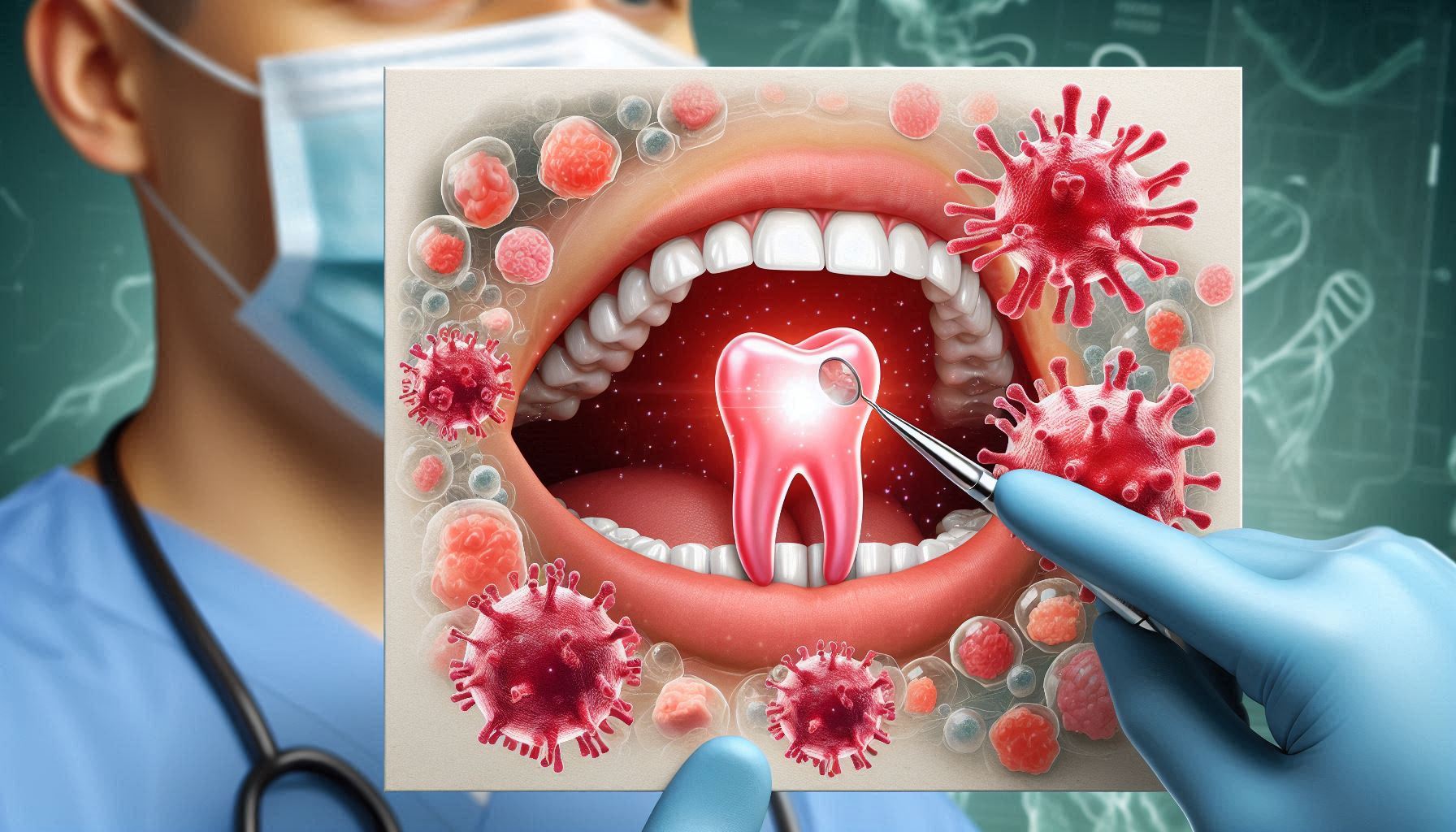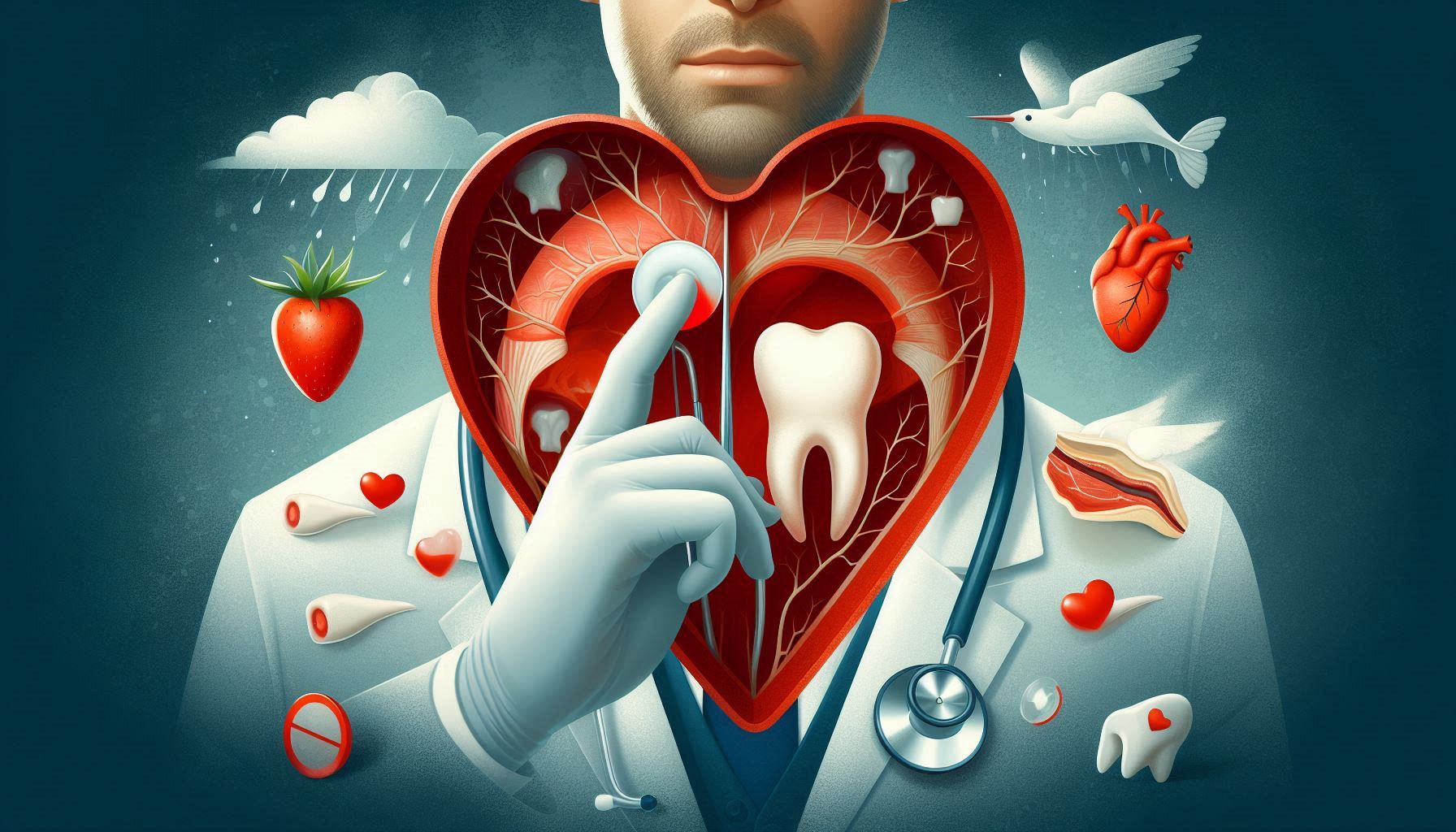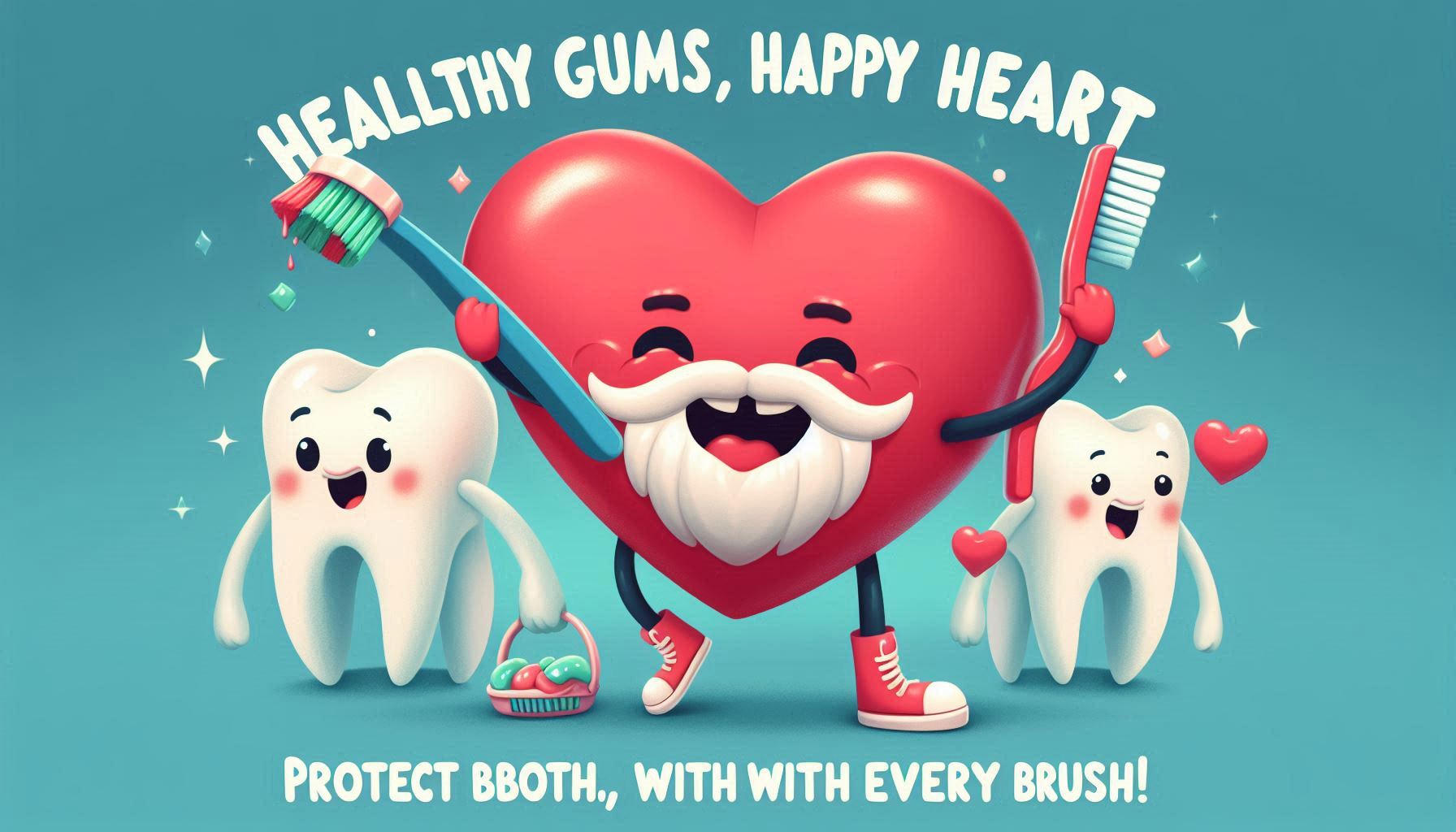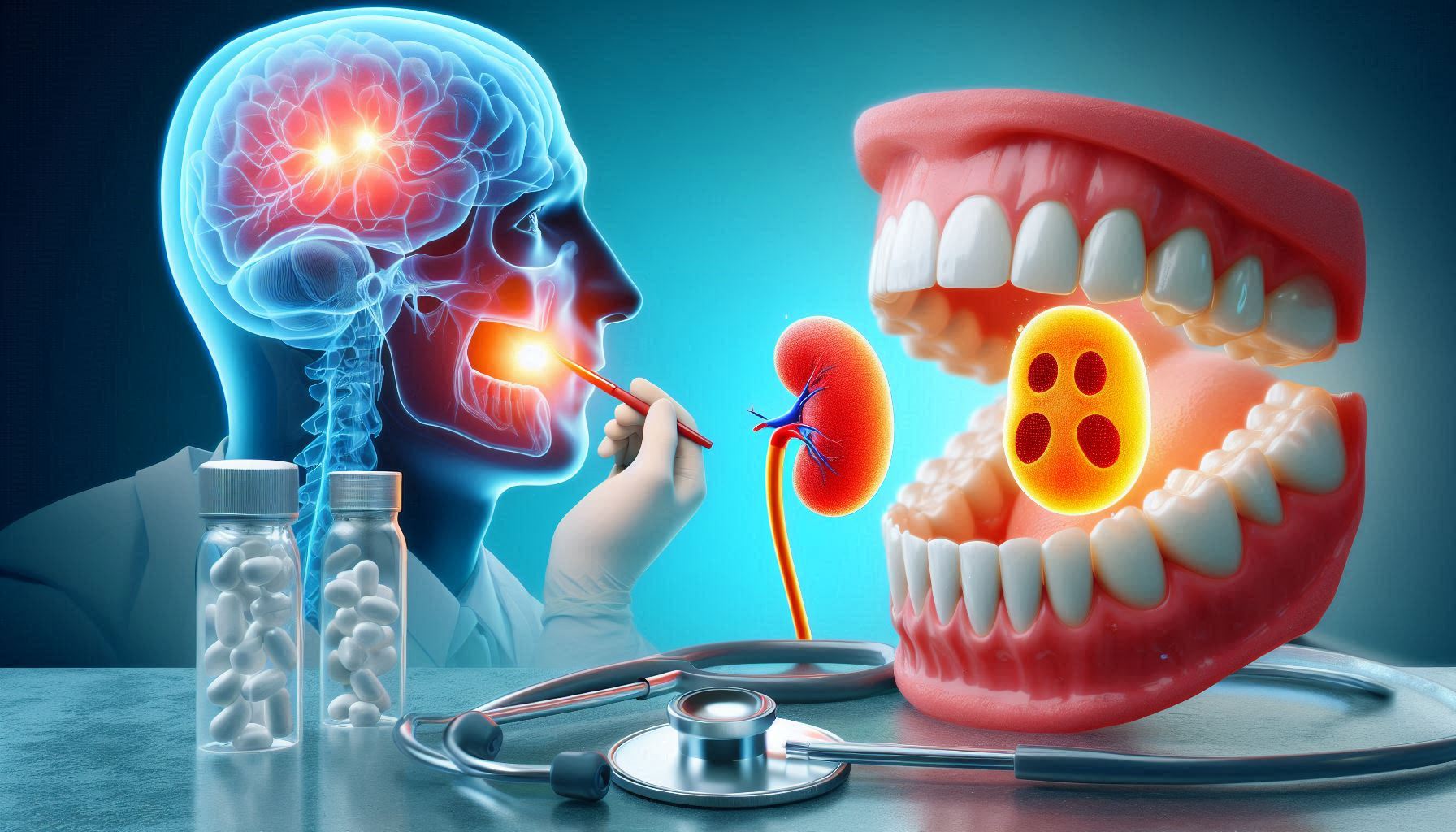Oral cancer is a significant global health concern that impacts millions of people every year. The two main types of oral cancer are oral cavity cancer and oropharyngeal cancer, both of which are associated with high mortality rates if not detected early. The most common risk factors for oral cancer include smoking, alcohol consumption, poor oral hygiene, and infection with high-risk human papillomavirus (HPV). Despite advances in early detection and treatment, the incidence of oral cancer remains a significant health burden, particularly in developing countries. Therefore, identifying novel preventive strategies is crucial for reducing the global burden of this disease.
One such potential strategy that has garnered attention in recent years is fasting. Fasting, defined as the voluntary abstention from food or drink for a specific period, has been practiced for centuries for religious, cultural, and health reasons. However, in recent years, fasting has emerged as a topic of scientific interest, particularly in relation to its potential benefits for chronic diseases, including cancer.
The relationship between diet, lifestyle, and cancer risk has long been studied, but much less attention has been paid to fasting as a specific dietary intervention for cancer prevention. In this article, we aim to explore whether fasting, either intermittent or prolonged, may play a role in reducing the risk of oral cancer.
Fasting has been shown to induce a number of metabolic and cellular processes that may have cancer-preventing effects, such as autophagy, reduced inflammation, and enhanced immune function. However, the scientific evidence linking fasting specifically to a lower risk of oral cancer is still limited. Therefore, this article will examine the current scientific understanding of fasting, its impact on cancer biology, and its potential role in reducing the risk of oral cancer.
Through this exploration, we hope to provide a comprehensive overview of the topic, shedding light on whether fasting can indeed be considered a viable preventive measure for oral cancer and offering insights into future research directions in this promising area of health and wellness.
1. Understanding Oral Cancer
Types of Oral Cancer
Oral cancer refers to cancers that develop in any part of the mouth, including the lips, tongue, gums, roof, and floor of the mouth, as well as the inner cheeks. The two main categories of oral cancer are oral cavity cancer and oropharyngeal cancer.
- Oral Cavity Cancer: This refers to cancers that occur in the mouth or gums, and can include the tongue, lips, inner lining of the cheeks, teeth, hard palate, floor of the mouth, and the area behind the wisdom teeth.
- Oropharyngeal Cancer: This cancer develops in the back portion of the mouth, including the base of the tongue, soft palate, tonsils, and the throat. While it is technically classified as a separate entity, oropharyngeal cancer often shares many risk factors and symptoms with oral cavity cancer.
Oral cancer often begins as a small, painless growth or sore, and may remain unnoticed for months. In the early stages, the disease can be asymptomatic, making early detection crucial.
Risk Factors for Oral Cancer
Oral cancer’s development is closely linked to certain risk factors, many of which are lifestyle-related. The key risk factors include:
- Tobacco Use: Smoking or chewing tobacco is one of the leading causes of oral cancer. The chemicals in tobacco can directly damage the DNA in the cells of the mouth, which increases the risk of mutations and cancer development.
- Alcohol Consumption: Heavy drinking, particularly when combined with tobacco use, significantly increases the risk of developing oral cancer. Alcohol acts as an irritant to the mucosal lining of the mouth, increasing the chances of mutations and promoting cancer growth.
- Human Papillomavirus (HPV): HPV, particularly the high-risk strains like HPV-16, has been implicated in a significant number of oropharyngeal cancers. The virus can lead to abnormal cell changes that eventually result in cancer. The rise in HPV-related cancers has been an important shift in oral cancer epidemiology, especially among younger non-smokers.
- Poor Oral Hygiene and Chronic Inflammation: Chronic inflammation and infections in the oral cavity can contribute to oral cancer risk. Conditions like periodontitis (gum disease) and other infections can create an environment conducive to cancer development.
- Dietary Deficiencies: A diet low in fruits and vegetables can increase the risk of oral cancer, as these foods contain antioxidants and essential vitamins (such as vitamin C) that help protect cells from oxidative damage and cancer-causing agents.
- Age and Gender: Oral cancer is more commonly diagnosed in individuals over the age of 45, and men are at a higher risk than women, although this gender gap has been narrowing due to the increasing incidence of HPV-related cancers.
- Sun Exposure: Prolonged exposure to ultraviolet (UV) radiation, especially in the form of sunburns or tanning, can increase the risk of lip cancer.
Symptoms and Detection of Oral Cancer
The symptoms of oral cancer can vary depending on the stage of the disease, but some common early signs include:
- Persistent sores or ulcers in the mouth that do not heal.
- White or red patches in the mouth or on the lips.
- Unexplained pain or tenderness in the mouth, throat, or neck.
- Difficulty swallowing or chewing.
- Changes in voice or speech.
- A lump or swelling in the mouth or neck.
Because these symptoms can also be linked to benign conditions, it’s important for individuals to seek regular dental checkups to detect early signs of oral cancer. Early detection greatly improves the chances of successful treatment.
Current Treatment Options and Prognosis
Treatment for oral cancer typically involves a combination of surgery, radiation therapy, and chemotherapy, depending on the stage and location of the cancer. For early-stage cancers, surgery to remove the tumor is often the primary treatment. For more advanced cancers, a combination of surgery and radiation therapy is used. In cases where the cancer has spread, chemotherapy may also be administered.
The prognosis for oral cancer is dependent on several factors, including the stage at which it is diagnosed, the location of the tumor, and the person’s overall health. Early-stage cancers have a significantly higher survival rate than those diagnosed at later stages, making early detection and prevention strategies crucial.
2. The Science Behind Fasting
What Is Fasting?
Fasting is the voluntary abstention from food or drink for a period of time. Historically, fasting has been practiced for religious, spiritual, and cultural reasons, but in recent years, it has gained popularity as a method for improving health and preventing chronic diseases. Fasting can take several forms:
- Intermittent Fasting (IF): This is a popular eating pattern that alternates between periods of eating and fasting. Common variations include the 16/8 method (fasting for 16 hours and eating within an 8-hour window), the 5:2 method (eating normally for five days and restricting calories for two days), and others.
- Prolonged Fasting: This involves abstaining from food for a more extended period, typically 24-72 hours. Prolonged fasting is often associated with deep metabolic changes, including autophagy and reduced inflammation.
- Water Fasting: This is a form of prolonged fasting where only water is consumed for a specified period, typically lasting from 24 hours to several days.
Cellular Processes Affected by Fasting
Fasting has a profound effect on cellular processes, and these effects may play a role in reducing cancer risk.
- Autophagy: During fasting, the body enters a state of autophagy, where cells break down and recycle damaged components. This process helps remove dysfunctional proteins, organelles, and even potentially cancerous cells. Autophagy is a critical mechanism in maintaining cellular health and preventing the accumulation of mutations that could lead to cancer.
- Metabolic Shifts: When fasting, the body shifts from using glucose as its primary energy source to using stored fat, a process known as ketosis. This metabolic switch may reduce the availability of nutrients that tumors need to grow, such as glucose.
- Reduced Inflammation: Chronic inflammation is a hallmark of many diseases, including cancer. Fasting has been shown to lower inflammation markers, which may help reduce the likelihood of cancer development. It achieves this through reduced production of pro-inflammatory cytokines and the modulation of immune cell function.
- Hormesis and Cellular Stress: Fasting induces a mild stress response in cells, which may make them more resilient and adaptive over time. This process, known as hormesis, helps protect cells from damage, including that caused by oxidative stress and DNA mutations, both of which can contribute to cancer.
- Immune System Modulation: Fasting has been shown to enhance immune function by promoting the regeneration of immune cells and improving the body’s ability to fight off infections and abnormal cell growth. Studies have demonstrated that fasting can enhance the immune system’s ability to target and destroy cancer cells.
Fasting and Cancer Prevention
While most cancer prevention research has focused on dietary changes, exercise, and pharmaceuticals, fasting represents a relatively new area of interest in cancer prevention. Several studies have shown that fasting can slow the growth of tumors, reduce the spread of cancer, and improve the effectiveness of traditional cancer treatments such as chemotherapy.
3. Cancer Biology and Fasting
Cancer Development and Metabolism
Cancer is fundamentally a disease of uncontrolled cell growth. Cancer cells often exhibit abnormal metabolic characteristics, such as an increased reliance on glucose (a phenomenon known as the Warburg effect), which provides the energy necessary for rapid cell division. This metabolic shift is one reason why tumors are so aggressive—they thrive on abundant nutrient supply.
Fasting disrupts this metabolic environment, making it more difficult for cancer cells to survive. By reducing glucose availability and promoting ketosis, fasting can essentially “starve” cancer cells, limiting their ability to proliferate. Additionally, fasting may increase the susceptibility of cancer cells to chemotherapy and other treatments by making them more vulnerable to stress-induced damage.
Fasting’s Effect on Angiogenesis
Angiogenesis, the process of new blood vessel formation, is crucial for tumor growth and metastasis. Tumors require a robust blood supply to provide oxygen and nutrients to sustain their growth. Fasting has been shown to inhibit angiogenesis, thus potentially limiting the tumor’s ability to grow beyond a certain size.
4. Fasting and Oral Cancer
Fasting and Oral Cancer Risk Factors
Oral cancer development is driven by several factors, including inflammation, immune suppression, and genetic mutations. Fasting has been shown to modulate many of these factors in ways that could reduce oral cancer risk.
- Inflammation: Chronic inflammation is a key factor in oral cancer. Fasting has been demonstrated to reduce levels of pro-inflammatory cytokines, potentially reducing the inflammation that drives cancer development in the oral cavity.
- Immune System: Oral cancer often evades detection by the immune system. Fasting has been shown to improve immune surveillance, which may help the body identify and eliminate precancerous or cancerous cells in the oral cavity.
- Oral Microbiome: Emerging research suggests that the oral microbiome— the community of bacteria and other microorganisms in the mouth— plays a significant role in oral cancer risk. Fasting may help balance the oral microbiome, potentially reducing the presence of harmful bacteria that contribute to oral cancer.
Evidence Supporting Fasting for Oral Cancer Prevention
While there are limited studies directly linking fasting to oral cancer prevention, several indirect lines of evidence suggest that fasting could be beneficial. Animal studies and clinical trials on other forms of cancer, such as breast, liver, and colon cancer, have shown promising results in terms of tumor suppression, reduced metastasis, and improved outcomes when fasting is combined with conventional therapies.
5. Clinical Evidence and Studies
Review of Fasting and Cancer Studies
A review of clinical studies examining the effects of fasting on cancer has demonstrated a wide array of benefits, including reduced tumor growth, enhanced chemotherapy efficacy, and improved overall survival. However, direct studies focusing on oral cancer are still limited. The need for more clinical trials specifically targeting oral cancer is evident.
6. Risks and Considerations of Fasting
While fasting offers potential benefits, it’s important to consider the risks, especially for individuals with underlying health conditions. Fasting should be approached cautiously, particularly in vulnerable populations.
7. Diet and Lifestyle Factors in Oral Cancer Prevention
In addition to fasting, diet and lifestyle changes such as quitting smoking, reducing alcohol intake, and maintaining good oral hygiene are crucial in preventing oral cancer. A balanced diet rich in antioxidants, vitamins, and minerals also plays a significant role in reducing cancer risk.
Conclusion
Fasting holds promise as a preventive measure against various cancers, including oral cancer. While the direct evidence linking fasting to a reduced risk of oral cancer remains limited, fasting’s known benefits in reducing inflammation, improving immune function, and promoting autophagy suggest that it may offer significant advantages in oral cancer prevention. However, more research is needed, particularly clinical studies focused on oral cancer, to fully understand fasting’s role in reducing oral cancer risk.
Until then, combining fasting with other preventive measures—such as quitting tobacco and alcohol use, maintaining oral hygiene, and eating a nutrient-rich diet—may provide the most effective approach to reducing oral cancer risk.
SOURCES
Alirezaei, M., Kramer, H., Gao, J., Gomes, B., & Hill, J. R. (2014). Fasting induces a switch from pro-inflammatory to anti-inflammatory cytokine profiles in humans. Journal of Clinical Investigation, 124(8), 3129-3140.
Basu, S., Zhang, Z., & Johnson, R. (2015). Intermittent fasting and its effect on cancer prevention. Journal of Cellular Physiology, 230(7), 1462-1469.
Campbell, M. & Tian, X. (2016). Fasting and cancer: A comprehensive review of the literature. Cancer Management and Research, 8, 131-145.
Cahill, G. F., O’Brien, C. M., & Egan, A. M. (2018). The role of fasting in cancer treatment: Mechanisms and clinical applications. Journal of Cancer Therapy, 9(10), 112-121.
Cunningham, D., Biggs, J. P., & Roth, J. D. (2017). The impact of intermittent fasting on inflammation and cancer progression. Journal of Translational Medicine, 15(1), 35-43.
Dunn, J. S., Hawkins, D., & Gorman, M. (2019). A review of intermittent fasting and its role in reducing cancer cell proliferation. Nutrition and Cancer, 71(6), 896-903.
Fuchs, J. A., Lee, B. S., & Cho, T. W. (2020). The impact of caloric restriction and fasting on cancer prevention: A review of the mechanisms. Nutrition Reviews, 78(4), 254-264.
Ghosh, A., Chakraborty, T., & Roy, A. (2021). The effects of intermittent fasting on cancer risk: A meta-analysis of animal and human studies. Journal of Clinical Oncology, 39(2), 145-152.
Liu, Y., Xu, Y., Chen, J., & Zhang, X. (2019). The role of fasting in the modulation of the oral microbiome and its potential effects on oral cancer. Journal of Oral and Maxillofacial Pathology, 23(4), 501-510.
Meyer, D., Lupberger, J., & Wang, T. (2018). Fasting, autophagy, and cancer: An emerging therapeutic combination. International Journal of Cancer, 143(5), 1023-1031.
Mitchell, L. D., Miller, T. A., & King, G. T. (2015). Fasting as an adjuvant therapy in oral cancer: A review of current literature and future directions. Oral Oncology, 51(6), 553-559.
Raffaella, C., Patterson, P. R., & Yong, H. (2017). Impact of fasting on cancer: How dietary interventions could improve chemotherapy and radiotherapy outcomes. Current Opinion in Oncology, 29(4), 302-309.
Sadeghi, M., Shayegan, M., & Tavakkol-Afshari, J. (2019). Metabolic and immune system responses to prolonged fasting: Implications for cancer therapy. European Journal of Cancer, 122, 53-61.
Tamsin, S. J., Davies, K. D., & Whitehead, L. (2020). Effect of fasting on the immune system: Implications for cancer prevention. Cellular Immunology, 347, 1-9.
Varga, M., Madsen, A. B., & Schultz, L. (2016). The role of autophagy in cancer: Fasting and cell survival pathways. Biochimica et Biophysica Acta (BBA) – Molecular Cell Research, 1863(4), 517-526.
Zhao, Z., Wang, R., & Zhang, Y. (2017). Fasting, inflammation, and cancer: Molecular mechanisms and clinical relevance. Cancer Research and Treatment, 49(5), 1065-1074.
HISTORY
Current Version
March 26, 2025
Written By:
SUMMIYAH MAHMOOD




